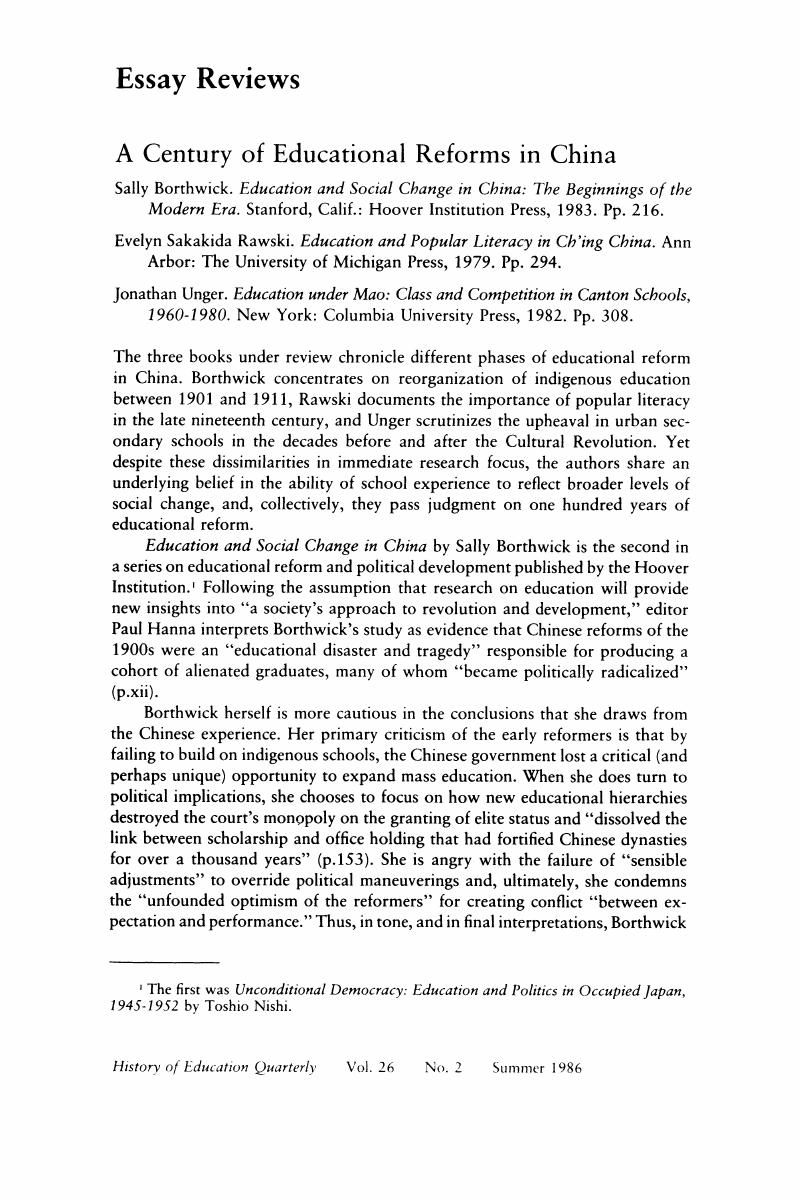Published online by Cambridge University Press: 24 February 2017

1 The first was Unconditional Democracy: Education and Politics in Occupied Japan, 1945–1952 by Nishi, Toshio.Google Scholar
2 Rawski estimates that female literacy varied between 2 and 10 percent.Google Scholar
3 In her footnotes, Rawski, (p. 245) cites economist Dwight Perkins's estimates that in the late nineteenth century when central government revenues in China were 1–2 percent of GNP, those in Japan were 25–27 percent of national income.Google Scholar
4 News in Brief, , Beijing Review, 22 July 1985.Google Scholar
5 Facts, and Figures, , Beijing Review, 3 Oct. 1983; and People's Daily, 12 May 1985, trans. in FBIS China Report, 17 May 1985, K. 11–12.Google Scholar
6 For a fuller discussion of rural schools since 1980, see Davis-Friedmann, Deborah, “The Provision of Essential Services in Rural China,” in Rural Public Services: International Comparisons, ed. Lonsdale, Richard E. (Boulder, Colo., 1984), 205–24.Google Scholar
7 Xinhua, 28 May 1985, trans. in FBIS China Report, 30 May 1985, K. 1–10.Google Scholar